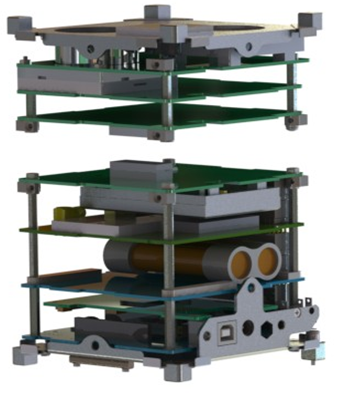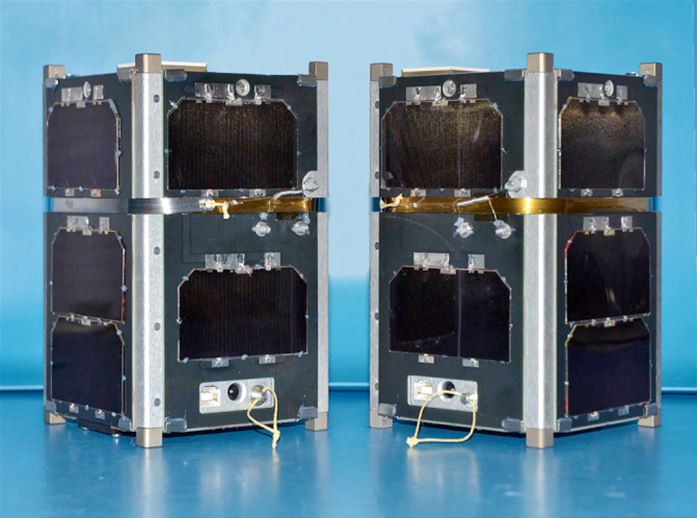FIREBIRD
Focused Investigations of Relativistic Electron Burst Intensity, Range, and Dynamics
Mission Overview
The FIREBIRD mission (Focused Investigations of Relativistic Electron Burst Intensity, Range, and Dynamics) was a targeted, goal-directed, space weather Cubesat mission to resolve the spatial scale size and energy dependence of electron microbursts in the Van Allen radiation belts. Relativistic electron microbursts appear as short durations of intense electron precipitation measured by particle detectors on low altitude spacecraft, seen when their orbits cross magnetic field lines which thread the outer radiation belt. Previous spacecraft missions (e.g., SAMPEX) have quantified important aspects of microburst properties (e.g., occurrence probabilities), however, some crucial properties (i.e., spatial scale) remain elusive owing to the space-time ambiguity inherent to single spacecraft missions. While microbursts are thought to be a significant loss mechanism for relativistic electrons, they remain poorly understood, thus rendering space weather models of Earth’s radiation belts incomplete. FIREBIRD’s unique two-point, focused observations at low altitudes, that fully exploit the capabilities of the Cubesat platform, will answer three fundamental scientific questions with space weather implications:
- What is the spatial scale size of an individual microburst?
- What is the energy dependence of an individual microburst?
- How much total electron loss from the radiation belts do microbursts produce globally?
Spacecraft Overview
The FIREBIRD spacecraft was a 1.5U cubesat that was made of two parts, FIRE, and BIRD. FIRE was designed and built at the University of New Hampshire. FIRE contains two solid-state electron detectors. The BIRD portion was developed by Montana State University and controls all of the power and communication between FIRE and the ground.

Status
FIREBIRD Flight Units (FU) 1 and 2 were launched on December 5, 2013 on the ELaNa II
(GEMSat) mission. FU2 was operation for 6 weeks before the power system failed. FU1 was operational from Ma
rch to June of 2014, before also suffering from a power system failure. Over 30MB of science data was downlinked from the to units.
FIREBIRD FU3 and FU4 were the EDU (Engineering Design Unit) and flight spare for th
e FIREBIRD mission, but will be now be launched as the FIREBIRD II mission.
FIREBIRD Flight Units 1 and 2 With antennas stowed.

